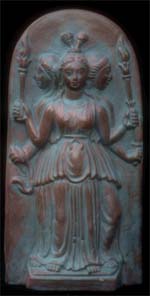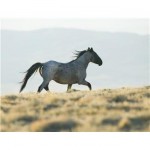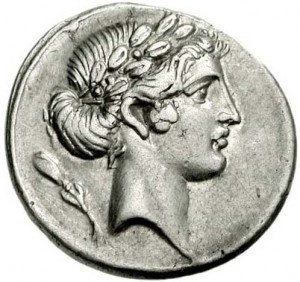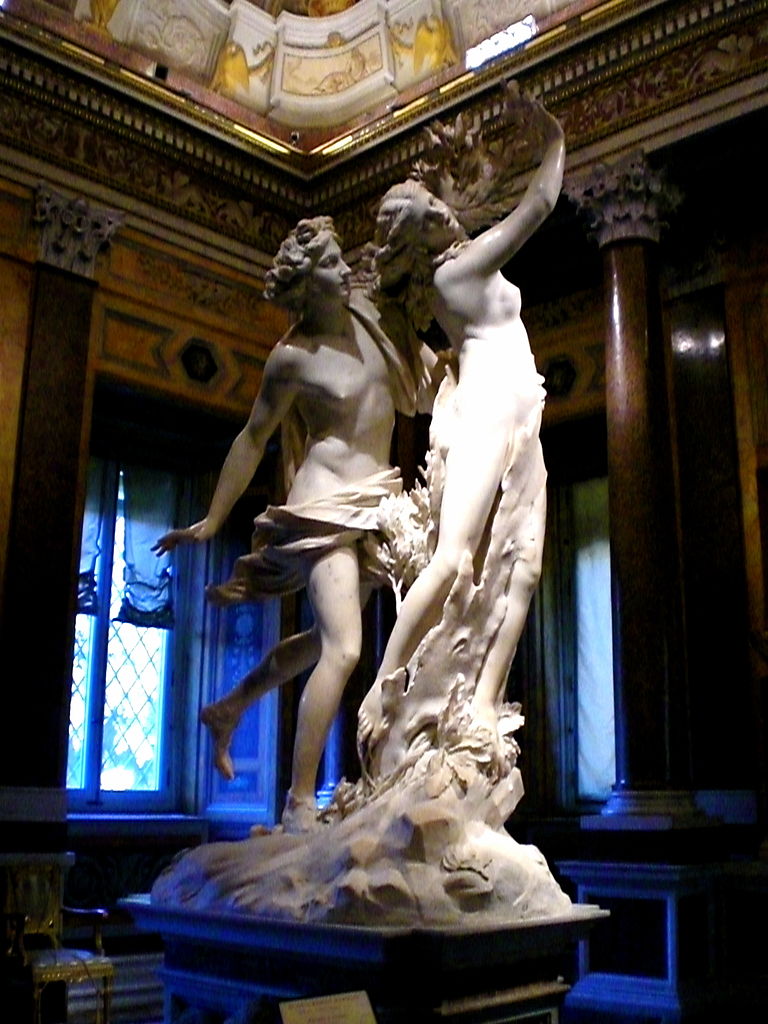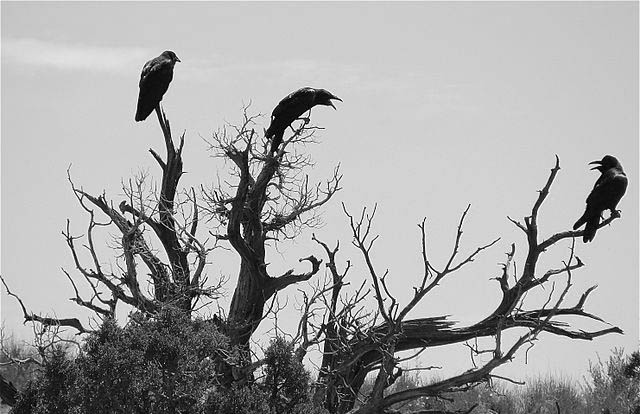
Possibly the most common Craft name among Witches with a Celtic bent (as well as many Witches who do not consider themselves Celtic) is Raven or some variant like Ravenwood or Ravenspring. At a Witch gathering when Raven’s name comes up, the most likely response is, “Which one”? Perhaps this is apropos, since ravens seldom travel alone and they are rather hard to tell apart.
In Celtic lore ravens and crows (who are often conflated) may be associated with heroes (Bran, Owin, Arthur), but are more often linked with frightening warrior goddesses. Badb Cath, whose name means “battle crow,” is a classic example. As her name implies, she waits at the edge of the battlefield to claim that the souls of the slain, like the ravens waiting to devour their flesh. Sometimes Badb appears as the soothsayer called The Washer at the Ford, a wailing pale woman with white-blonde hair who sits on the banks of a stream wringing out a bloody shirt that will not come clean.
Badb is not the only goddess linked with the Washer, nor is she the only goddess of the crows. Morrigan is another warrior who claims the dead. Like other Celtic corvid goddesses, she is not just a passive player who prophesies and accepts the dead: at times she actively challenges the hero, who can only parlay her attacks temporarily. This excerpt from The Ulster Cycle is illustrative:
One night while Cuchulainn was sleeping, during the time when he was still fighting the men of Connacht, during the time when the men of Ulster were still fighting their labor pangs, he was awoken by a piercing cry from the north. He scrambled from his tent to find his chariot driver yoking the horses, and the two drove out on the plain to investigate the sound. There they met a woman in a chariot pulled by a red mare. The woman had red eyebrows and red hair, a red dress and a red cloak. Tied to her back was a gray spear. “I hear you have performed heroic and wonderful deeds,” she told Cuchulainn, “and I have come to offer you my love.” “I have no time for lovemaking,” Cuchulainn replied emphatically, “for I am completely worn out. I have been fighting all day and must prepare for battle tomorrow. Your visit could not come at a more importunate time.” “I will help you in your struggle,” the woman countered. “I have already helped you greatly, Cuchulainn, and you have benefitted from my protection.” “It is not a lady’s help I need in this fight!” Cuchulainn argued hotly, “and I will not trust your protection.” “Very well,” she answered, “prepare to do battle with me as well as the others.” With that the lady in red, her mare and her chariot disappeared, and he and his driver were left completely alone, except for a crow sitting in the high branch of a tree. Cuchulainn felt his own pang of sickness then, because he realized he had been speaking to the warrior goddess Morrigan. [Quoted from Invoking Animal Magic: A guide for the pagan priestess]
Other Celtic raven/crow goddesses I am aware of (and this list is probably not exhaustive) are Macha, Nemain, Rhiannon, Branwen, Natosuelta, and Cathubodua. Like actual ravens, these goddesses are difficult to distinguish and debate continues over whether they are in fact different appellations for the same goddess. The inclusion of Macha and Rhiannon, who many know as horse goddesses, may be surprising, but ravens and horses appear together consistently in Celtic art.
Sources
Green, Miranda. Animals in Celtic Life and Myth. London: Routledge, 1992.
Monaghan, Patricia. The Encyclopedia of Celtic Mythology and Folklore. New York: Checkmark Books, 2008.



